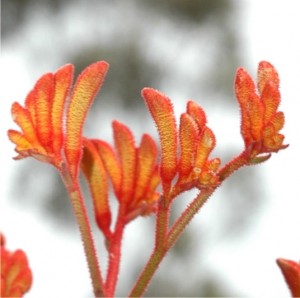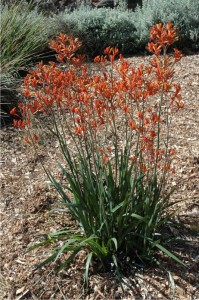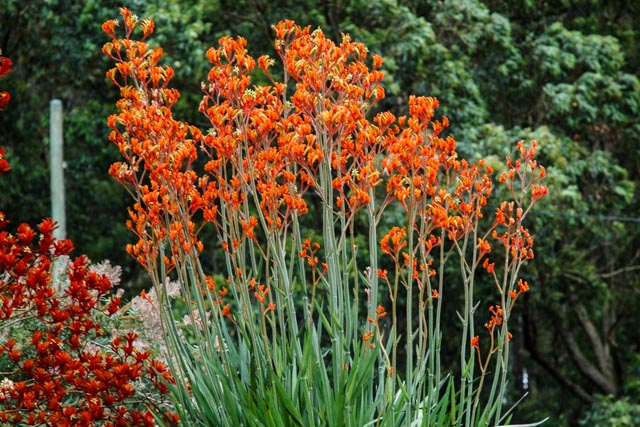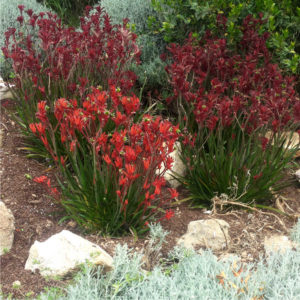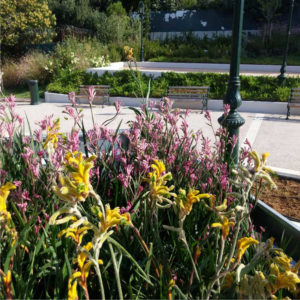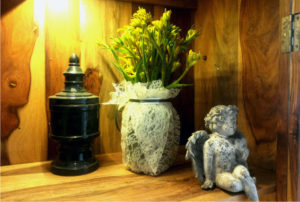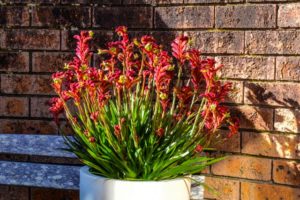We have no doubt that this is the best-performed, tall orange paw around. Distinctive, light orange flowers adorn this highly branched variety. Neat upright foliage and loads of flowering stems makes for an outstanding, well balanced presentation.
The Landscapers are made to be planted in your garden or in very big decoration pots and you should cut their big stems to bring the flowers in your vase indoors.
Height to 1.6m
Width to 1.5m
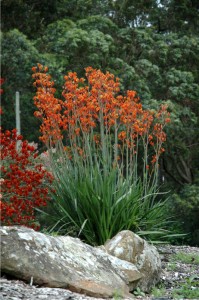
How to get the most out of Tangerine:
Place it in full or part sun position
The exotic Anigozanthos loves sunlight and should be placed in a bright spot. How much light? As much as possible, as it makes its’ colors stronger. You should plant it in your garden in well drained soils. Anigozanthos are very drought hardy, however, extra irrigation at the time of flower bud formation will benefit flowering performance. Once established it can survive only with the water from the rainfalls. It’s best to keep the plant moist to encourage new growth, especially when planted in pots, but never leave its roots flooded in water.
Outdoor Care
Anigozanthos will give an exotic presence and standout in any garden it prides. As long as night temperature stays above 5°C [41F], plant it outdoors and it will keep flowering until the frost sets in. Landscapers are light frost resistance, which means that they can survive outdoors when temperature drops to -5°C [23F] for 3-4 days. Many times, their rhizomes can survive even lower temperature and give new shoots next spring.
While planted outside, keep an eye for snails and slugs.
Outdoor Anigozanthos flourishes best in warm and sunny places, as balconies, terraces and courtyards. The plants will be conspicuous and enjoyable in big decorative pots or freely planted in beds in the garden. Feed in autumn and spring with controlled release fertiliser to promote good plant health. Our varieties are not especially phosphorus sensitive, so you don’t need to use a native plant fertilizer.
To help Anigozanthos thrive in your garden, cut old flowering stems back to their base to tidy up the plant and encourage repeat flowering. Remove any dead stems from the base of the shoot. New shoots will appear from underground rhizomes. Older plants will benefit by the annual removal of any damaged leaves.
Indoor Care
Placing a landscaper inside the house is usually not practical because of the size of it. However, you can plant it in big decoration pots and keep it in terrace or balcony.
It loves the sun so make sure that your plant minimum a few hours of sunlight everyday to get it to blossom the most and maintain its bright colors. If the flowers fade out, it can be a result of changes in the amount of sunlight anigozanthos receives. Bring it to a more sunny position and the color will become intense again.
Feel free to cut the flowers from the plant and move them to a vase to decorate your table. Cut the stem close to the leaves and put it in the water. Anigozanthos flowers’ vase life can reach 30 days if treated properly.
Don’t hesitate to look at our Inspiration page to get more ideas on how to use your plants.
